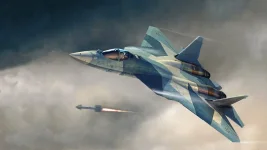- Views: 2K
- Replies: 22
A high-level Pakistani delegation is reportedly in the United States to lobby for the acquisition of advanced American radar and air defence technology.
The diplomatic effort follows a series of precise and destructive airstrikes by the Indian Air Force (IAF) in early May 2025, which revealed critical weaknesses in Pakistan's existing, predominantly Chinese-supplied, air defence network.
The Indian military action, named Operation Sindoor, was initiated as a response to a terror attack in Pahalgam, Jammu and Kashmir, on April 22, 2025, which India attributed to Pakistan-based terrorists organisation.
Between May 8 and 10, the IAF conducted strikes on 12 Pakistani air bases and nearly 30 other military sites. Key bases hit in the operation included those at Nur Khan, Sargodha, Jacobabad, and Skardu, demonstrating a significant reach into Pakistani airspace.
The operation inflicted substantial damage on Pakistan's military infrastructure. Independent analysis of satellite imagery from Maxar Technologies confirmed the destruction, showing large craters on runways, demolished aircraft hangars, and damaged radar facilities.
Indian sources estimate that approximately 20% of Pakistan’s air force assets were destroyed. The losses reportedly included American-made F-16 and Chinese-developed JF-17 fighter jets, as well as a Saab 2000 airborne early warning and control (AEW&C) aircraft.
A strike on Bholari Airbase alone is reported to have resulted in the deaths of over 50 personnel, including a squadron leader.
A central issue highlighted by the Indian offensive was the apparent failure of Pakistan’s multilayered air defence shield. The IAF successfully employed advanced tactics, including electronic jamming, to bypass Chinese-made systems such as the HQ-9/P long-range and FD-2000 medium-range air defence missiles.
Indian forces utilised a combination of loitering munitions, Harpy anti-radiation drones, and precision-guided weapons like the SCALP and HAMMER missiles to complete their objectives within 23 minutes, exposing the vulnerabilities of relying heavily on Chinese technology.
In the aftermath, reports circulating on the social media platform X suggest the Pakistani delegation in the U.S. is urgently requesting a technological upgrade to counter India's aerial capabilities.
Islamabad is believed to be seeking sophisticated systems like the American Patriot missile defence system or significant upgrades to its existing F-16 fleet. These reports, while not officially confirmed, align with social media posts quoting a Pakistani official admitting the country’s defences were overwhelmed.
The recent conflict has underscored a growing disparity in military technology in the region.
While Pakistan’s retaliatory drone and missile attacks were largely neutralised by India’s integrated anti-drone grid and its Russian-made S-400 air defence systems, India’s strikes penetrated deep into Pakistan.
The IAF’s success is attributed to its modern fleet, which includes French Rafale jets, the indigenous Tejas fighter, and a robust air defence network.
The situation places the United States in a complex diplomatic position. The U.S. administration, which claimed to broker a ceasefire in May to prevent further escalation toward a potential nuclear conflict, must now consider Pakistan's request.
Fulfilling the request for advanced military hardware could risk complicating the strategic partnership between the U.S. and India, which is a major operator of American military equipment.
However, Pakistan's move signals a potential re-evaluation of its long-standing dependence on Chinese military exports, a reliance that has been a cornerstone of its defence policy for decades.
Any potential arms deal will likely face strict U.S. export controls and intense geopolitical scrutiny.



